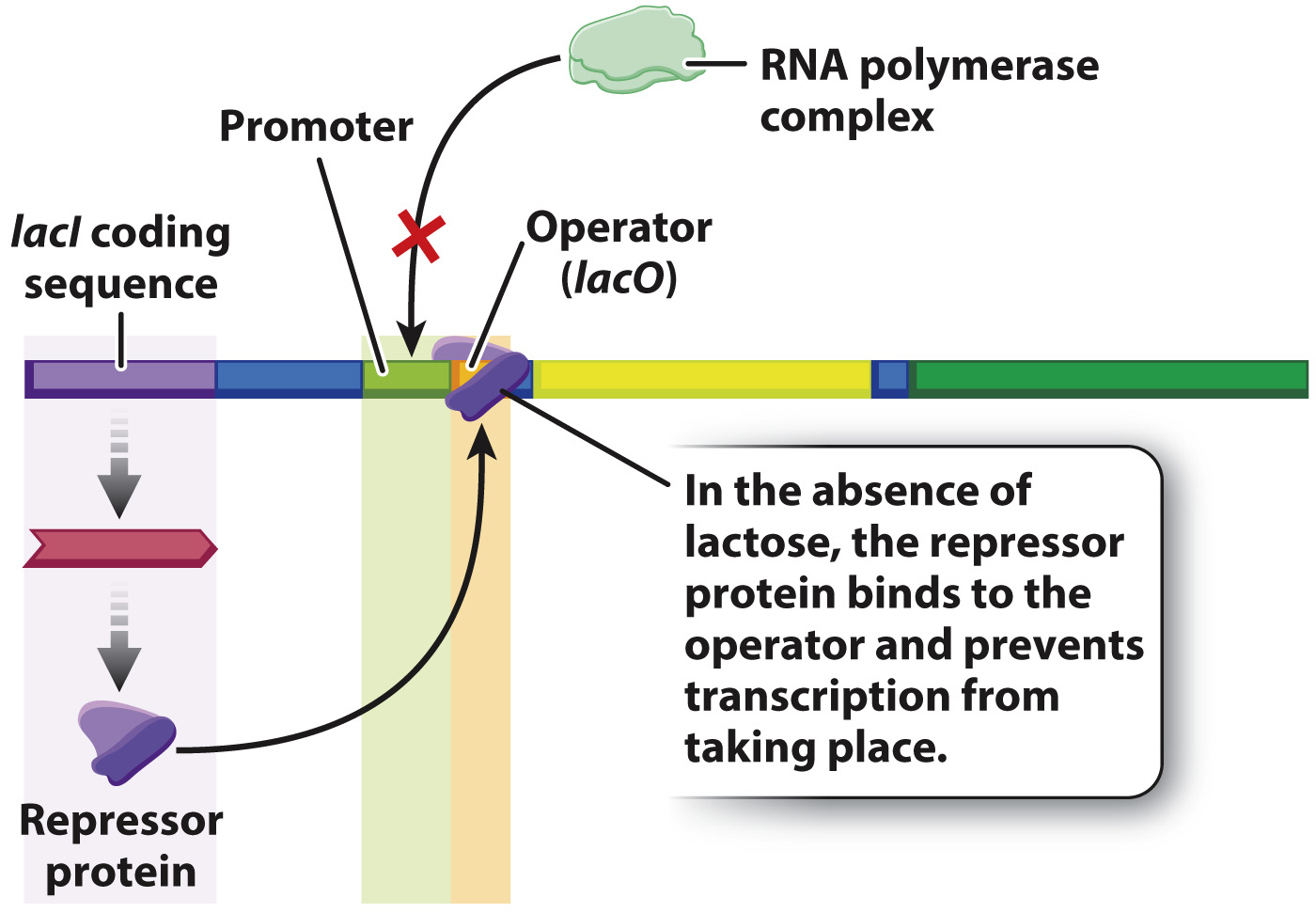The repressor protein binds with the operator and prevents transcription, but not in the presence of lactose.
The lactose operon is negatively regulated by the repressor protein encoded by the lacI gene. That is, the structural genes of the lactose operon are always expressed unless the operon is turned off by a regulatory molecule, in this case the repressor. Fig. 19.16 shows what the operon looks like in the absence of lactose. The lacI gene, encoding the repressor protein, is expressed constantly at a low level. The repressor protein binds with the operator (lacO), the RNA polymerase complex is not recruited, and transcription does not take place.

The configuration of the lactose operon in the presence of lactose is shown in Fig. 19.17. When lactose is present in the cell, the repressor protein is unable to bind to the operator, RNA polymerase is recruited, and transcription occurs. In other words, lactose acts as an inducer of the lactose operon since it prevents binding of the repressor protein. The inducer is not actually lactose itself, but rather an isomer of lactose called allolactose, which differs in the way the sugars are linked. Lactose in the cell is always accompanied by a small amount of allolactose, and so induction of the lactose operon occurs in the presence of lactose.

The binding of the inducer to the repressor results in an allosteric change in repressor structure that inhibits the protein’s ability to bind to the operator. The absence of repressor from the operator allows the RNA polymerase complex to be recruited to the promoter, and the polycistronic mRNA is produced. The resulting lactose permease allows lactose to be transported into the cell on a large scale, and β-galactosidase cleaves the molecules to allow the constituents to be used as a source of energy and carbon. The lactose operon is therefore an example of negative regulation by a repressor, whose function is modulated by an inducer.